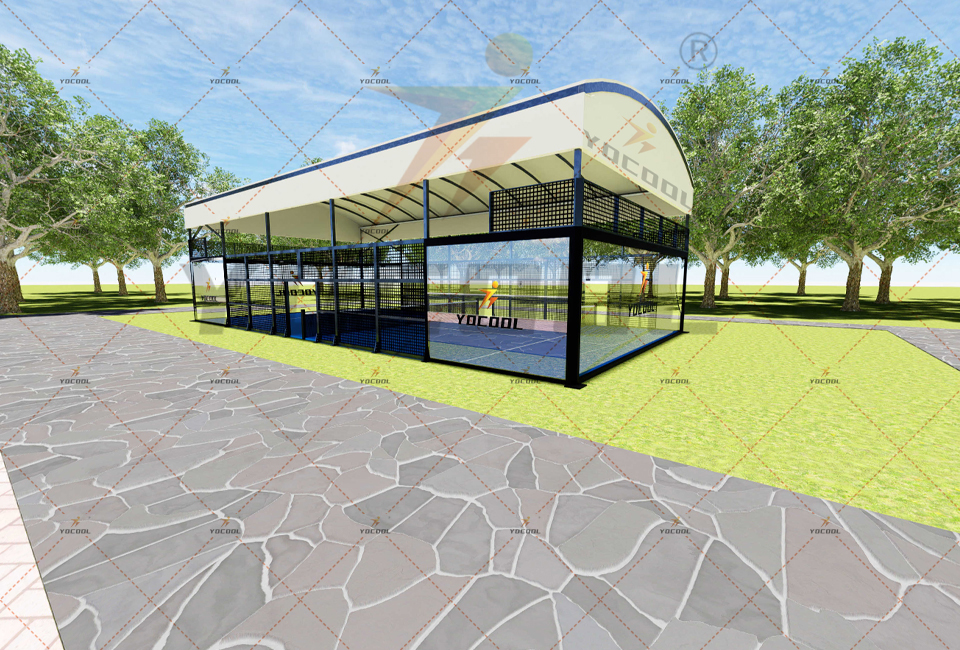

The Rise of Paddle Tennis A New Wave in Sports
Paddle tennis, a sport that has been gaining traction around the globe, combines elements from both traditional tennis and platform tennis, creating a unique experience for players of all ages and skill levels. Its growing popularity can be attributed to several factors, including accessibility, social interaction, and the health benefits it offers.
What is Paddle Tennis?
Paddle tennis is played on a smaller court, typically measuring 20 meters long and 10 meters wide, surrounded by walls. The game utilizes solid paddles and a depressurized tennis ball, making it less harsh on the body than traditional tennis. Unlike conventional tennis, where players can hit the ball over the net, paddle tennis allows for wall play, reminiscent of squash, which adds an exciting dynamic to the game. The mix of these elements creates a fast-paced, strategic sport that is attractive to various demographics.
Accessibility and Inclusivity
One of the primary reasons for the sport's surge in popularity is its accessibility. Paddle tennis courts can be found in urban and suburban settings, often in community centers, parks, and sports clubs. The smaller court size makes it easier for beginners to engage in play without feeling overwhelmed. Furthermore, players of different skill levels can easily compete against one another, fostering an inclusive environment.
The equipment required – a paddle and a ball – is relatively inexpensive, making it easy for new players to get started. This affordability has led to an influx of players, from children to seniors, who can enjoy the game without requiring a significant financial commitment.

Community and Social Interaction
Paddle tennis is not just about physical activity; it also emphasizes community engagement and social interaction. The sport’s design encourages doubles play, promoting teamwork and camaraderie among players. Many clubs organize regular social events, leagues, and tournaments, allowing individuals to connect with others who share their passion for the game. This social aspect can significantly enhance the overall experience, creating lasting friendships and a sense of belonging.
Health Benefits
Engaging in paddle tennis can have numerous health benefits. The sport provides a full-body workout, combining cardiovascular exercise with elements of strength, coordination, and agility. Playing paddle tennis improves hand-eye coordination and enhances reflexes, benefiting overall physical fitness. Moreover, the social interaction inherent in the sport can boost mental health, reducing stress levels and improving mood.
The Future of Paddle Tennis
As paddle tennis continues to grow in popularity, it is also evolving. More facilities are being built, and existing courts are being upgraded to accommodate the increasing demand. National and international governing bodies are emerging, organizing competitions and promoting the sport on a global scale.
In conclusion, paddle tennis is not just a passing trend; it represents a shift towards a more inclusive and community-oriented sporting culture. Its accessibility, social benefits, and health advantages make it an appealing choice for individuals looking to stay active and engage with others. As the sport continues to evolve, it is poised to become a staple in the world of leisure activities, inspiring many to pick up a paddle and step onto the court.
High-Performance Industrial Flooring Solutions China Paddle Tennis Court for Sale
High-Performance Industrial Flooring Solutions Durable & Cost-Effective
Homogeneous Transparent Floor – Durable & Stylish Rubber Floor Solutions
Premium Homogeneous Transparent Floor for Durable & Stylish Spaces Rubber Floor Solutions
Premium Sports Floor Solutions Durable PVC Sports Floor & Rubber Floor for Gyms
Durable Rubber Composite Floor Premium Rubber Floor & Mats Solutions